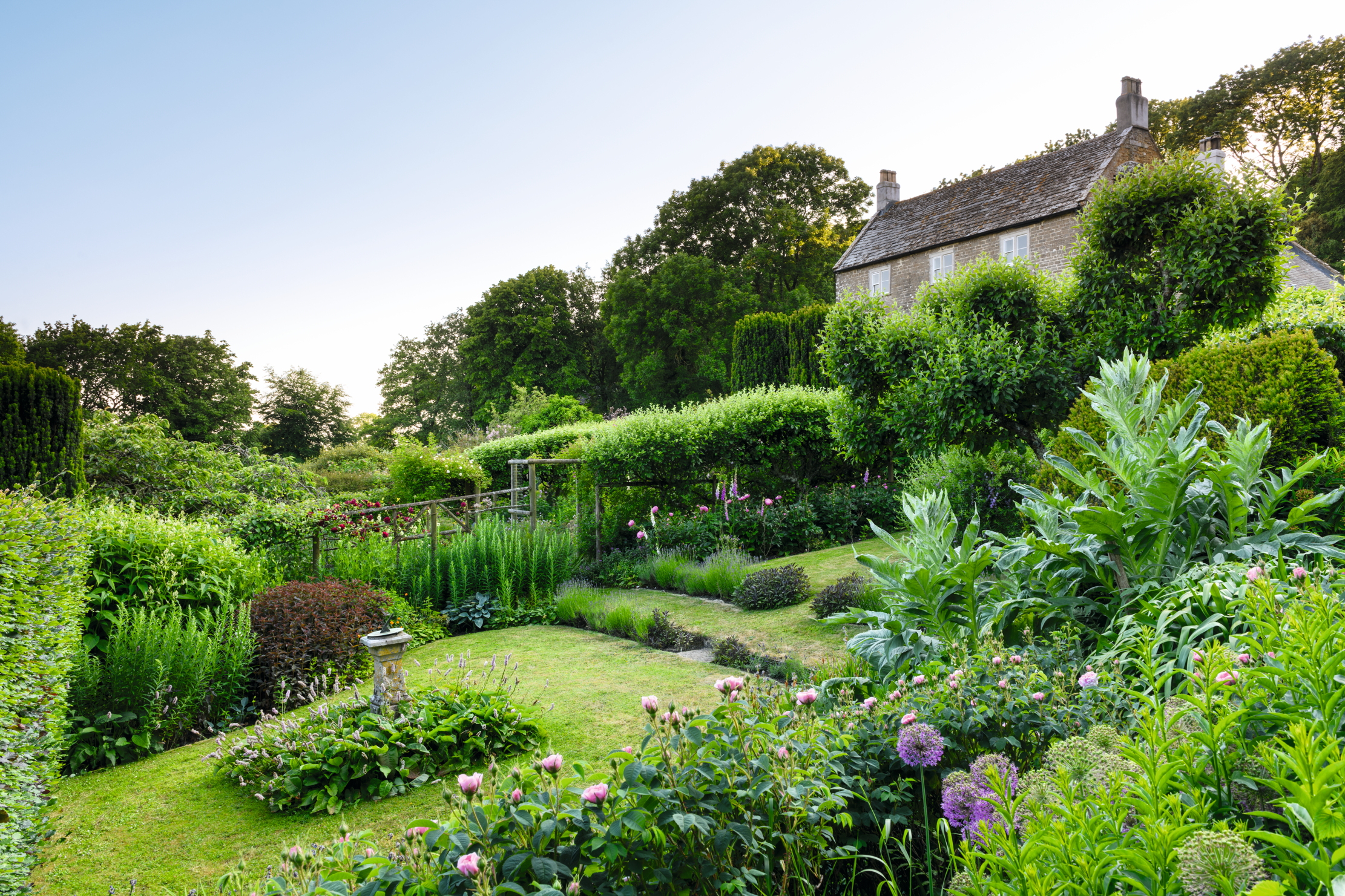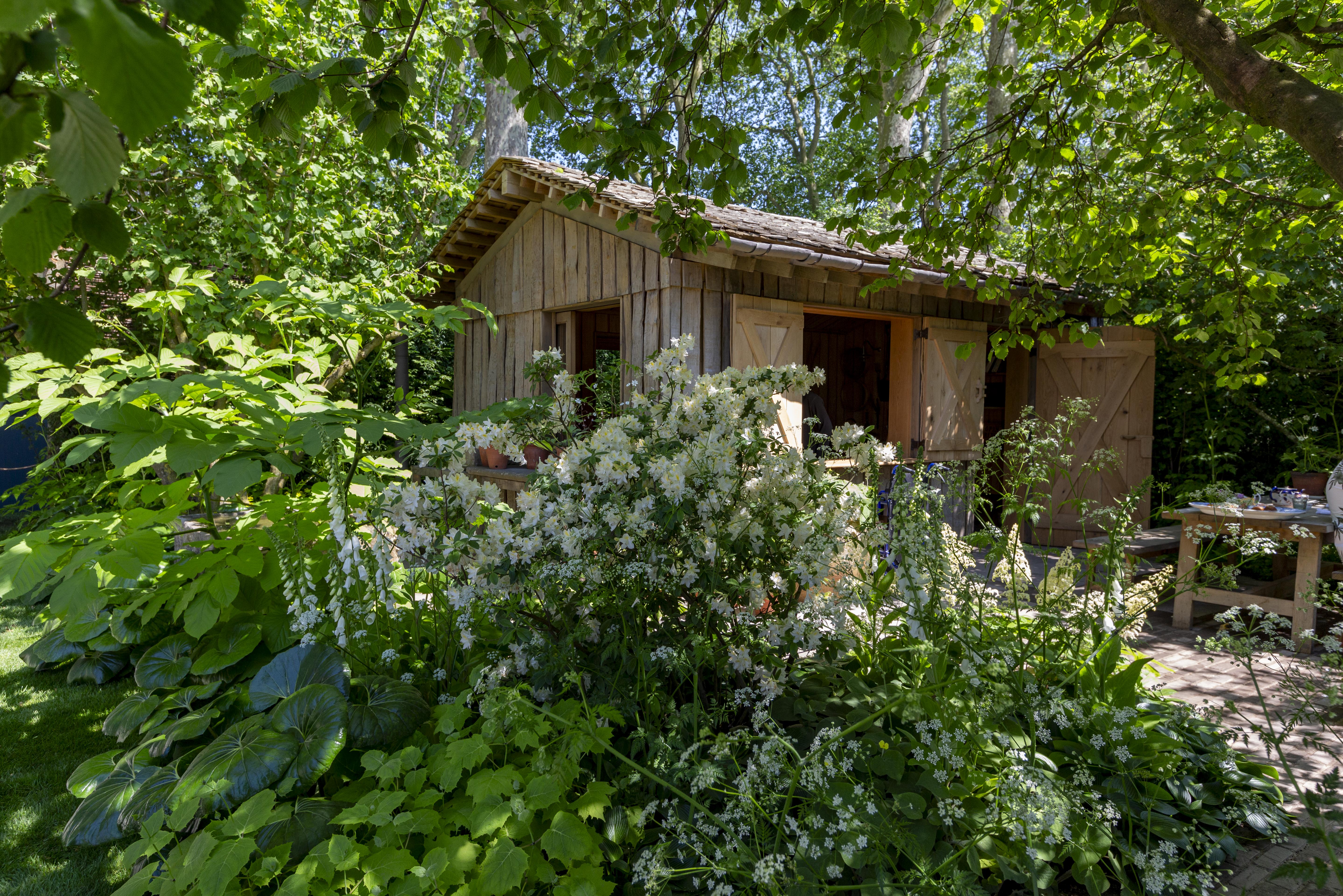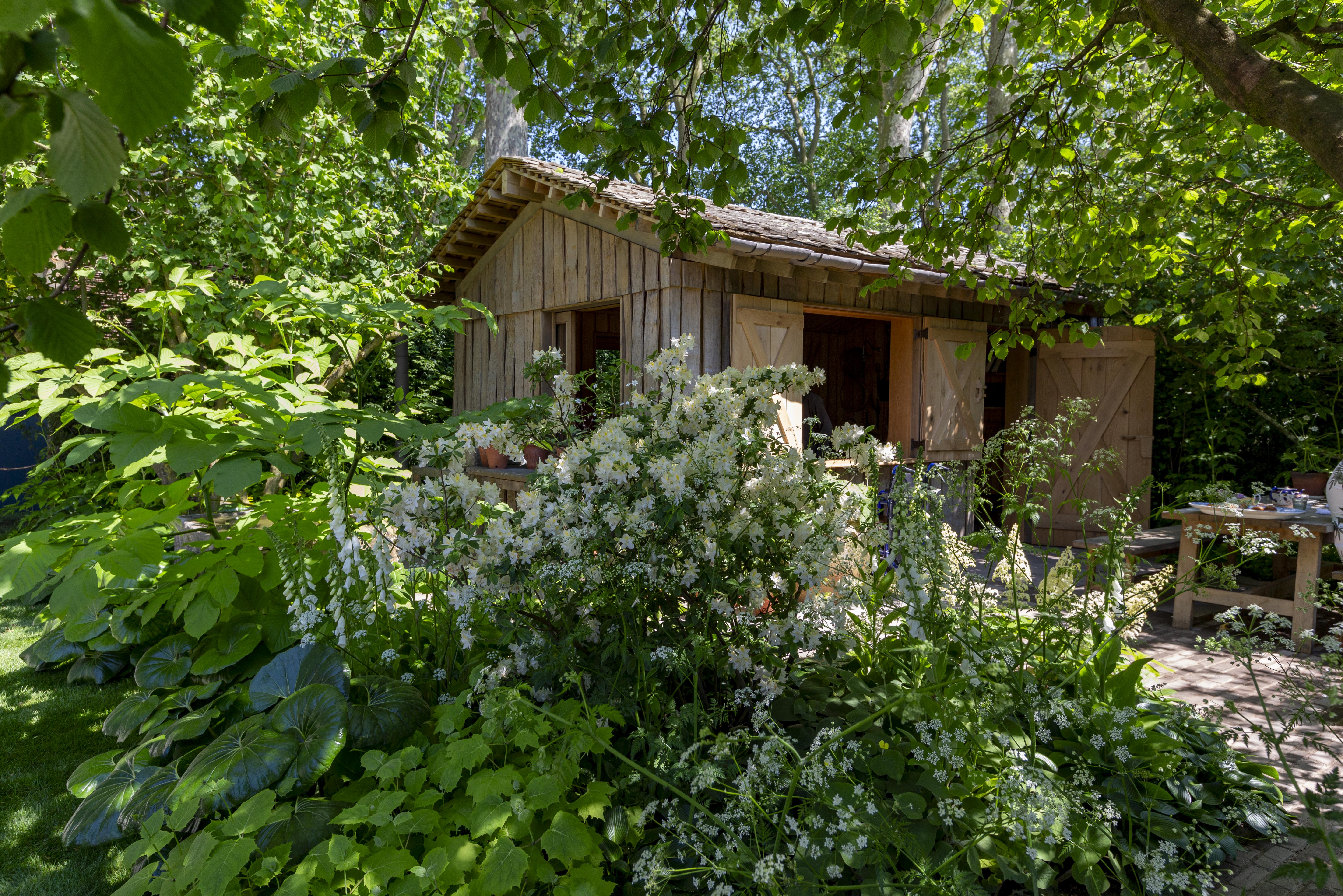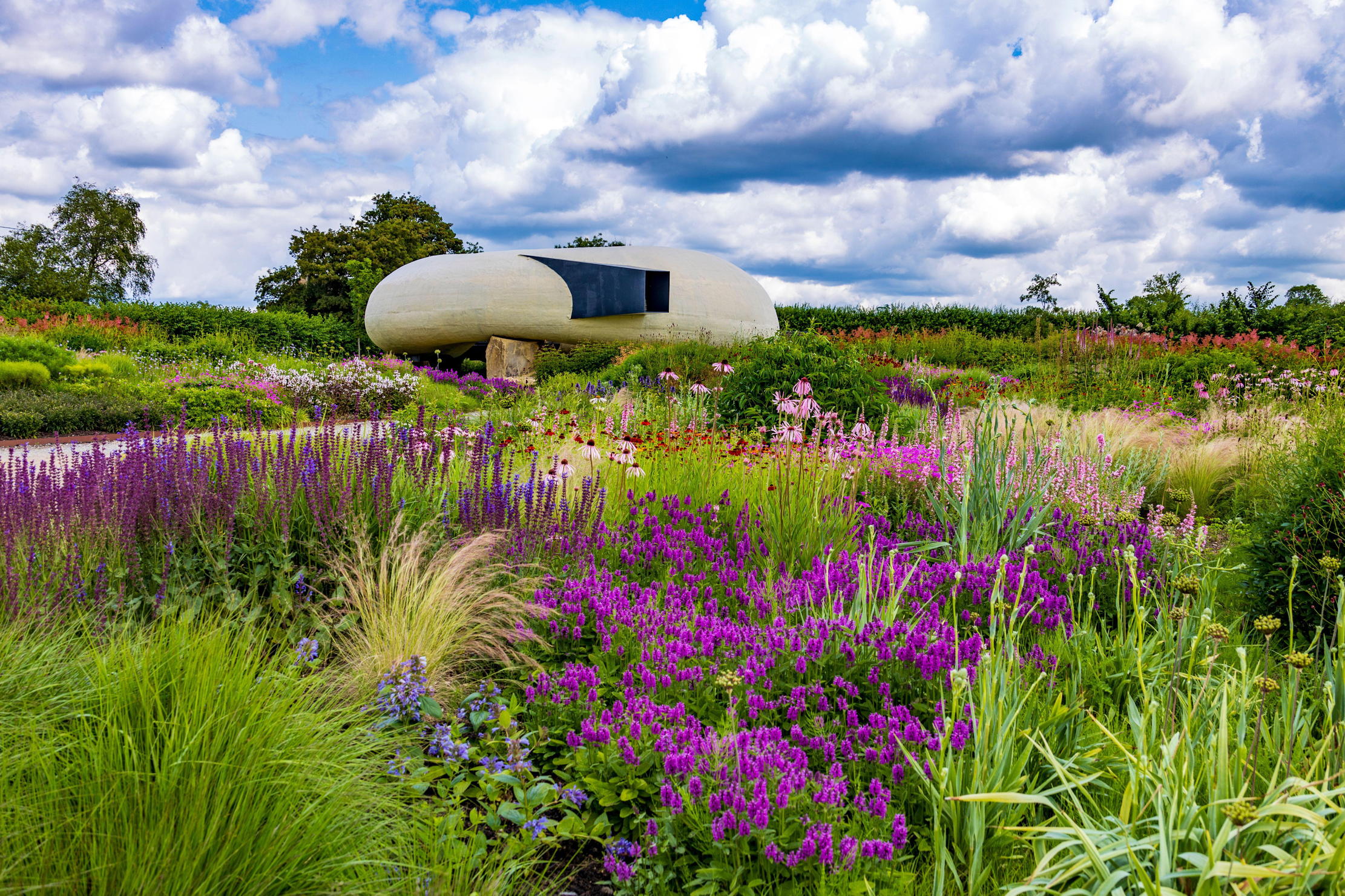Chilcombe House: the garden that's become a 'pilgrimage' and a 'living legacy' to its former owners
When John and Caryl Hubbard first moved to Chilcombe House, they created a garden that impressed and inspired. Now, after their passing, their legacy lives on through a garden that basks in comfortable maturity.

I last visited Chilcombe House more than 30 years ago when it belonged to the acclaimed American painter John Hubbard, who, for 50 years, made his home in England with his wife, Caryl, and who created the garden. John died in 2017 and Caryl in 2021 and Chilcombe now belongs to their children, Kate and Edmund.
As I approached for my return visit, I was intrigued as to what I would discover after such a long time, not least because I vividly remembered the powerful sense of place portrayed by the simple stone house, its intimate yet ebullient garden and the surrounding Dorset landscape folding down to the sea a few miles away. I need not have worried.
As soon as I walked out from the small courtyard and took in the view of the garden sloping gently southwards from the high retaining wall of the lawn terrace in front of the house, I could see that Hubbard’s creation was very much intact, both visually and atmospherically. The sense of undisturbed rural seclusion and of a garden that had been sensitively added to the centuries-old farmhouse and its setting were undimmed.
Undimmed — and now basking in comfortable maturity. We had not been there very long when my wife, Annabel — who had not visited before — turned to me and said: ‘This feels like a very contented garden.’ It was a good description; all the little details that the Hubbards had so lovingly developed and nurtured, together with their palette of plants, had now matured from youthful vigour to middle-aged contentment.

The original layout of the main square area below the upper retaining wall, extending to less than one acre, was visibly intact, with its four adjoining sub-squares that they felt would best continue the shapes of the original farmhouse garden. The main features set out in a neat plan, as illustrated in my earlier Country Life article (August 10, 1989), the cobble garden, orchard, vegetable garden and sundial garden, with the double border and tapestry hedges lining the main axes at right angles, were all immediately recognisable.
Of course, with the passage of time and especially considering the garden’s limited area, some plants have outgrown their allotted space and have been cut back. The most striking example is the pair of 150-year-old Irish yews that flanks the stone steps in front of the house, down from the terrace lawn to the cobble garden. In my original article, I described how when John and Caryl Hubbard arrived at Chilcombe in 1969, the flight of steps had been completely obscured by the yews, so the trees were cut back. A few years ago, the same happened again and, recently, the yews have once more been brought back under control.
More often, however, structural trees and hedging plants have grown steadily, so as to increase the garden’s sense of intimacy and enclosure. The tapestry yew and green and purple beech hedges that stretch from one boundary wall to another across the centre of the garden are now noticeably taller and denser, but still immaculately shaped. Likewise, the quartet of elegant, columnar Irish yews that stands sentinel around the central junction of tapestry hedges and double border.
Exquisite houses, the beauty of Nature, and how to get the most from your life, straight to your inbox.

In the orchard, ancient apple trees that survived from the farmhouse garden are even more spreading and gnarled, whereas the white-flowered ‘Seagull’ and ‘Rambling Rector’ roses that the Hubbards trained into them now form huge frothy white cloaks for weeks in summer. Towards the boundary wall, I admired an equally mature climbing rose with brilliant red flowers, but was not certain of its name. Consulting my 1989 article, I found that I noted it then as the semi-double ‘Crimson Conquest’.
From the orchard, the grass path leads into the adjacent vegetable garden between handsome Portuguese laurels that have now formed dense clipped drums and, on the far side, a pair of impressive walnut trees casts shade. Hubbard’s painstakingly laid paths of stone steps have lasted well, but, the old potager has gone and this has become more of a flower garden, with drifts of red salvias, blue sibirica iris, purple knautia and tall thalictrums, followed by Michaelmas daisies later on.
Other key plants in the Hubbards’ original garden have developed with decades of nurture, so that their impact is even greater than in their earlier life. Best of these for me are the Fantin-Latour roses, spaced out along the grass path that runs across the top of the main garden in front of the retaining wall of the lawn terrace. I admired them in my original article; now, they are magnificent. When you stand on the lawn terrace and look across the garden, they are large enough to appear above the retaining wall and, when in flower, they form luxuriant domes of pink flowers in the foreground of the view.

They alternate with impressive clumps of Euphorbia mellifera and there are other similar veterans to admire: among the roses, pink ‘Ispahan’ and dusky-mauve ‘Cardinal de Richelieu’ in the central double borders; close to the wooden gate into the garden from the neighbouring farmyard is a trio of philadelphus, syringa and Viburnum x burkwoodii; in the centre of the sundial garden’s upper lawn is a dome of Buddleia alternifolia.
The Hubbards would be delighted that their cobble garden is still fully intact. They patiently transported the stones from a nearby beach to make a pattern of paths around eight small beds filled with a pot pourri of plants, such as penstemons, foxgloves, hardy geraniums, aquilegias and artemisias. On one side of the cobble garden is the original pergola, in line with the steps down from the lawn terrace. Its Arts-and-Crafts-style path of pebbles around large flat stone rounds is still in place and the pergola is the same simple structure of wooden poles, hung with the classic combination of honeysuckle, climbing roses, such as ‘Frances E. Lester’ and ‘Félicité et Perpétué’, and viticella clematis.
Over the years, Chilcombe has become a place of pilgrimage for many garden lovers, somewhere they could discover a rare fusion of intensely English garden and landscape beauty, created by a modest American artist for whom the garden was the background to and inspiration for his daily painting life. Today, the Hubbards are no longer with us, but their garden is a living legacy that retains all its old magic, mellowed by an inevitable but happy ageing process.
George Plumptre is the CEO of the National Gardens Scheme

The creation of Tom Stuart-Smith's showstopping garden at RHS Chelsea 2024
Tom Stuart-Smith returned to Main Avenue at the RHS Chelsea Flower Show 2024 with a hazel grove for the National
RHS Chelsea Flower Show 2024: See all the gold medallists
We take a look at all the gold medallists from the 2024 RHS Chelsea Flower Show. All photographs by Andrew

Alan Titchmarsh on Chelsea 2024: 'We need controversy to make us think... Just don’t expect me to regard slugs and snails as my friend'
Alan Titchmarsh looks ahead to the 'matchless spectacle' of the 2024 Chelsea Flower Show, the 'Paris catwalk of the British

'I could buy ready-to-go evergreens and hurry up the process, but I’m not in a hurry' — why gardeners, like plants, should move slowly
Shrubs, grasses, mess and dead leaves are nothing to be feared. We should take a leaf from Piet Oudolf and